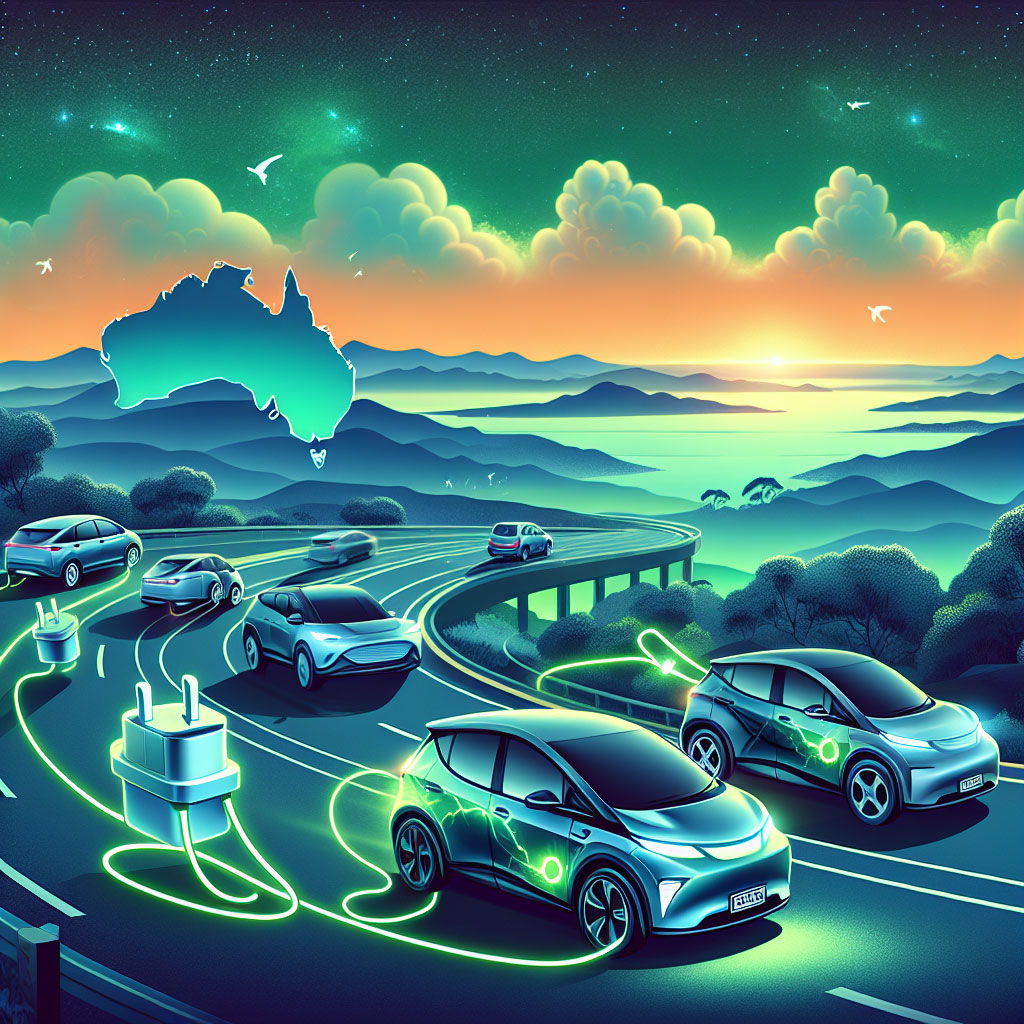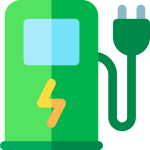
Australia’s EV market is shifting rapidly as 2025 progresses. New entrants from China and refreshed models from established brands are converging on the market, while federal and state programs are beginning to match vehicle uptake with investment in chargers, fleet trials and heavy-vehicle pilots. This briefing summarises the key launches, government activity and broader market developments Australians should know about as of September 2025, and outlines what these changes mean for drivers, fleet managers and policymakers.
Key EV launches and updates
- Zeekr 7X (expected Q3 2025)
- Zeekr’s new mid-size SUV is slated to arrive in Australia in the third quarter of 2025 and is positioned squarely against the Tesla Model Y. The 7X promises advanced driver-assistance features, adaptive air suspension and a focus on refinement and in-cabin technology-traits designed to appeal to buyers upgrading from inner-premium SUVs.
- Tesla Model Y (facelift)
- Tesla’s refreshed Model Y is expected to remain one of the segment’s best-sellers. The facelift is anticipated to include aerodynamic and software refinements that boost efficiency and driver aids, tightening the contest between legacy EVs and new entrants such as Zeekr.
- BYD Sealion 7
- BYD is bringing a larger pure-electric SUV into the market with the Sealion 7, positioned above the Atto 3. It aims to compete with the Model Y and options like the Kia EV5 by offering a roomier cabin and battery configurations tuned for real-world range.
- Kia EV9 (targeted Q4 2025)
- Kia’s premium three-row EV will arrive late in the year. The EV9 represents Kia’s push upmarket with seven-seat practicality, elevated towing and charging specifications and features typically expected in larger family SUVs.
- Hyundai Ioniq 9 (targeted Q3 2025)
- Hyundai’s large three-row Ioniq 9 is another entrant targeting families and buyers seeking high-range, high-comfort electric SUVs. Its arrival will strengthen the upper end of Australia’s EV SUV market.
- Nissan Leaf (new generation expected 2025)
- Nissan plans a new-generation Leaf in 2025, signalling the brand’s renewed commitment to passenger EVs alongside other models in its electrified pipeline.
- Toyota bZ4X & Subaru Solterra (recall, September 2025)
- Around 10 September 2025, regulators and manufacturers issued a recall for certain bZ4X and Solterra vehicles due to driver-visibility concerns. Owners and fleet operators should check recall notices and dealer communications for eligibility and remediation timelines.
Government support and infrastructure
- ARENA’s “Driving the Nation” and broader federal support
- The Australian Renewable Energy Agency (ARENA) is actively investing in projects to accelerate BEV uptake, with a focus on heavy vehicles and supporting charging and grid-integration solutions. The “Driving the Nation” program is designed to underwrite demonstrations, infrastructure pilots and scaling of depot-based charging for buses, trucks and vans.
- State-level charging rollouts
- Victoria, New South Wales and South Australia have directed funding to new public DC fast chargers and community charging hubs, addressing gaps in regional coverage. These deployments are prioritising highway corridors and regional towns to reduce range anxiety for longer trips.
- Fleet electrification and commercial pilots
- Federal and state grants are increasingly tied to fleet electrification pilots. Commercial projects include trials of electric vans, municipal fleets and large-scale depot chargers. Australia Post’s trial of Mercedes‑Benz eVito vehicles is a prominent example, part of broader investments in parcel delivery electrification.
- Grid and technical integration
- Programs supporting vehicle-to-grid (V2G) pilot projects, smart charging platforms and managed charging tariffs are becoming more common. These initiatives aim to manage peak demand and link EV charging with renewable generation, lowering operating costs for drivers and reducing strain on local networks.
Other market developments
- New brands and competition
- Chinese brands such as BYD, Zeekr and GWM are expanding their model lines and dealer footprints in Australia. Luxury newcomers like Avatr and other niche marques are also exploring the market, pushing competitive pricing and specification levels.
- Affordability: cheapest EVs in market
- As of September 2025, some of the most competitively priced EVs include the BYD Dolphin, GWM Ora and the MG4. These models are helping broaden EV ownership to cost-sensitive buyers and are key to increasing market share beyond early adopters.
- Commercial vehicles and major trials
- Trials of electric vans and light commercial vehicles are accelerating. Australia Post’s eVito pilot, along with other local trials, signal significant fleet procurement in the coming years. Heavy vehicle pilots, supported by ARENA and state programs, are exploring large-battery trucks and depot charging solutions.
Implications for buyers, fleet managers and policymakers
- Buyers: greater choice and clearer value propositions
- The influx of SUVs and larger family EVs gives buyers more options in segments where many still prefer ICE vehicles. New models often come with better warranty and battery guarantees, increased standard equipment and competitive pricing compared with earlier imports.
- Fleet managers: total cost of ownership and depot charging
- Fleets need to combine vehicle selection with charging strategy and energy procurement. Funding support for depot chargers and trials of managed charging help lower transition costs but careful planning remains essential to capture efficiency and emissions benefits.
- Policymakers: coordination and grid readiness
- State-federal coordination is critical to ensure chargers are deployed where they deliver the most benefit-along corridors, in regions and at high-usage depots. Investment in network upgrades and smart charging will be required to avoid bottlenecks as uptake rises.
Further reading
- For a deeper look at the charging infrastructure plans and what they mean for drivers and businesses, see our explainer on EV charging infrastructure in Australia: https://evevolution.com.au/blog/ev-charging-infrastructure-explained
Conclusion
Australia’s EV landscape in late 2025 is one of broader model choice, accelerating infrastructure investment and rising competition from Chinese and legacy global brands. Government programs such as ARENA’s “Driving the Nation,” combined with state-level charging funding, are beginning to align vehicle availability with a more robust charging network and fleet electrification pilots. For consumers and fleets alike, the next 12-18 months will be decisive: vehicle specs and availability will continue to evolve rapidly, and practical charging solutions-alongside clear maintenance and recall resolution processes-will influence purchase decisions. For journalists, policymakers and buyers, staying informed about model arrivals, recall notices and infrastructure rollouts is essential as Australia transitions to a more electrified vehicle fleet.
What new EVs will arrive in Australia in late 2025?
Expect the Zeekr 7X, facelifted Tesla Model Y, BYD Sealion 7, Hyundai Ioniq 9 and the Kia EV9 (late 2025). Nissan’s new-generation Leaf is also expected during the year. Availability windows may shift as supply chains and local homologation progress.
How is the Australian government supporting EV adoption?
Support is a mix of federal programs (including ARENA’s projects), state grants for public charging, funding for depot chargers and pilots for heavy vehicles. These initiatives focus on reducing barriers to fleet electrification and expanding fast‑charging coverage.
Will the charging network meet growing demand?
Progress is positive-states and private operators are deploying DC fast chargers along major routes and in regional towns-but gaps remain. Smart charging, V2G pilots and strategic corridor deployment are targeting the most acute needs; however, local network upgrades will be needed as adoption accelerates.
Are there safety concerns with recent recalls?
Recalls such as the September 2025 action for certain Toyota bZ4X and Subaru Solterra vehicles are handled through official manufacturer and regulator channels. Owners should check the Australian Competition and Consumer Commission (ACCC) recall register and contact dealers for remediation.
Which EVs are most affordable in Australia right now?
The BYD Dolphin, GWM Ora and MG4 are among the most competitively priced models in the market in September 2025. Pricing varies by specification, dealer offers and state incentives; total-cost-of-ownership comparisons are recommended.
What should fleet managers prioritise when electrifying?
Prioritise whole-of-life cost analysis, depot charging plans, electricity procurement (including potential on-site renewables), staff training and staged deployment to match operational needs and grid capacity.
About EV Evolution
EV Evolution is the leading online platform dedicated to Australian electric vehicle owners and enthusiasts. We foster a vibrant community, delivering essential EV news and insights, and enhancing user engagement through our innovative, AI-powered chatbot for dynamic discussions. Our mission is to empower Australian electric vehicle owners and enthusiasts by fostering a vibrant, AI-driven online community that connects, informs, and advances the nation’s electric vehicle landscape.




